The Civil Service Fast Stream continues to grow but is not representative of the diversity of the UK’s population. Robert Adam explores the data.
See our explainer for our more recent analysis of the Civil Service Fast Stream.
The Fast Stream is the main graduate development programme for the UK civil service. Given that the Fast Stream intake are intended to be future leaders of the civil service, the balance of appointments matters to the future diversity of government.
The number of Fast Stream applications, vacancies and appointments continues to rise.
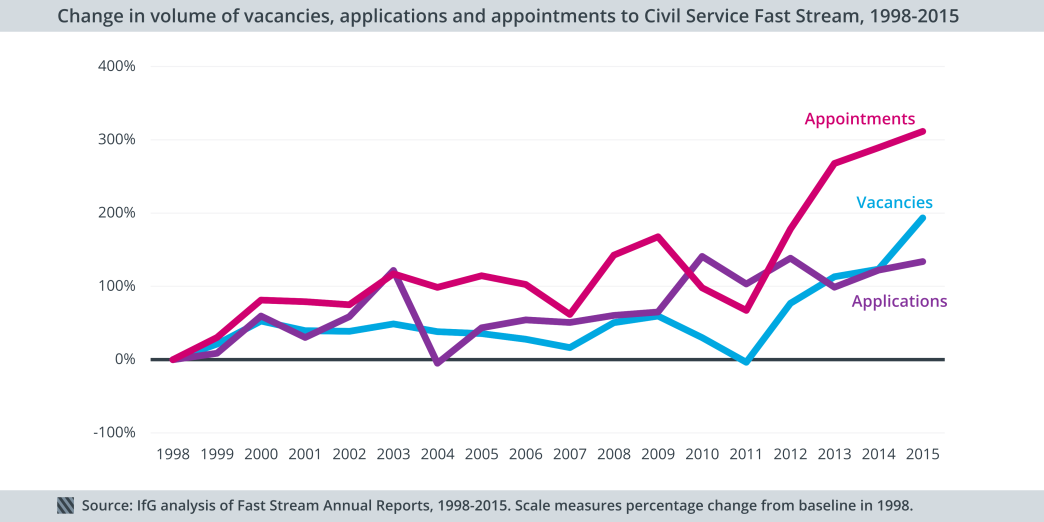
The Fast Stream continues to grow in popularity and size. The number of applications and appointments grew by 5% from 2014 to 2015, to 21,135 and 967 respectively. The number of vacancies grew even faster, by 31% from 820 to 1077, the biggest increase since 2012. Applications have stayed around the same level since 2010, but vacancies and appointments have grown.
97.5% of Fast Stream candidates are filtered out between registration and appointment.
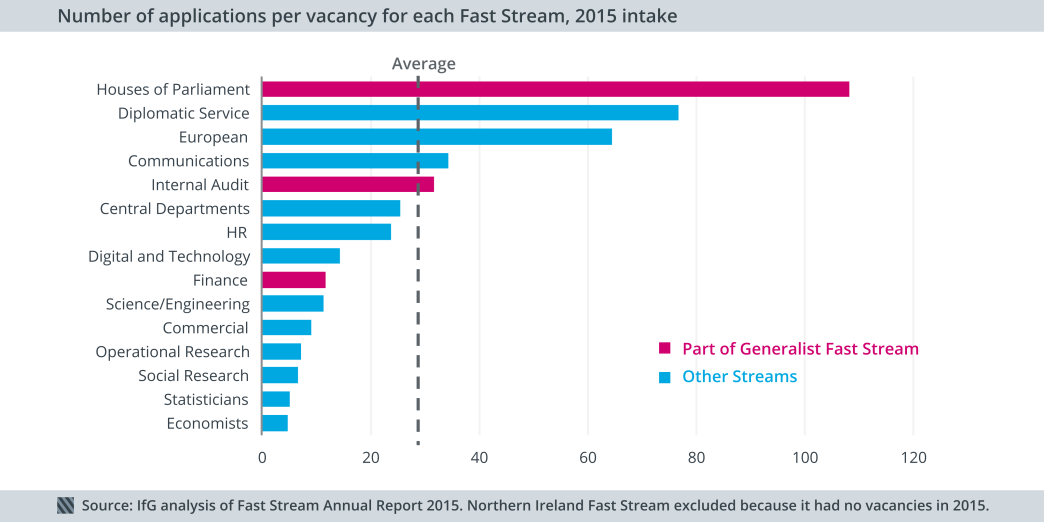
The Fast Stream is an extremely competitive programme. Only 5% of applicants will receive an offer of appointment. Surprisingly, almost 50% of candidates drop out before beginning their application, suggesting a high degree of interest in the Fast Stream but less drive or capacity to complete the initial online tests (which have been replaced with a situational judgment test for the 2016 intake).
The Parliament, diplomatic and European Fast Streams are most popular with applicants.
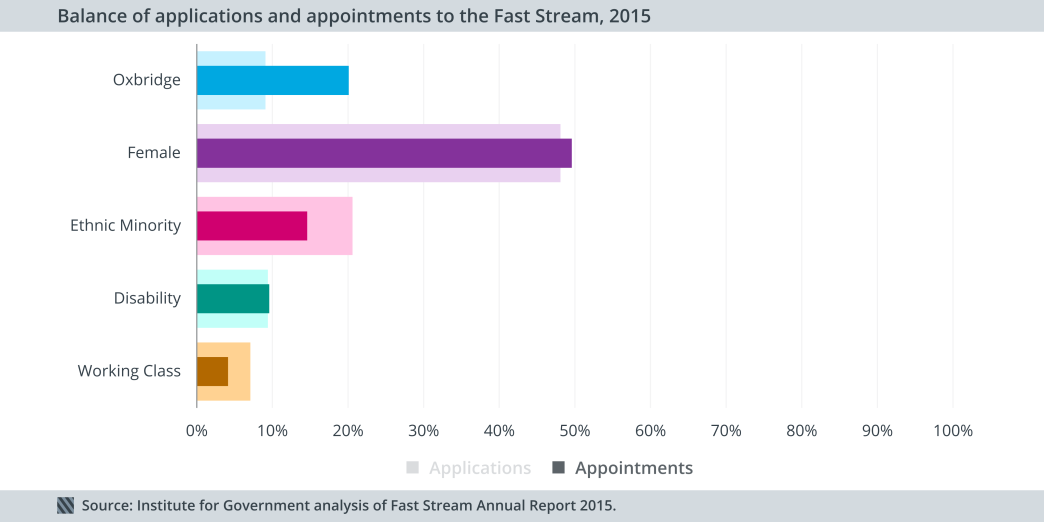
The Fast Stream offers a number of different paths to potential applicants. Of these options, the three most popular in 2015 were Parliament, the Diplomatic Service, and the European Fast Stream, which attracted 108, 77 and 64 applicants per place respectively. These three streams were also the most competitive in 2014. The Digital and Technology stream was among those streams receiving lower than average applications per place, underlining some of the challenges in addressing the digital skills gap.
The Northern Ireland stream did not take any Fast Streamers in 2015 despite receiving 1,393 applications. The Public Administration and Constitutional Affairs Committee recently called for the Fast Stream to focus more attention on devolution issues which suggests that the disappearance of the Northern Ireland scheme may not have gone unnoticed.
Ethnic minorities, non-Oxbridge and working class backgrounds are less likely to be appointed to the Fast Stream.
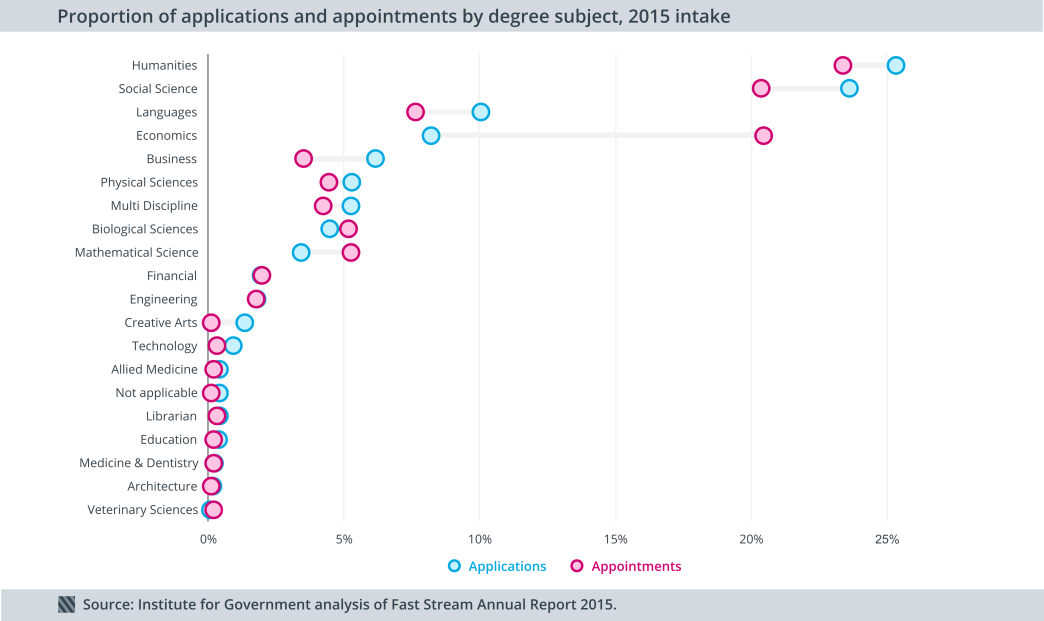
In terms of the diversity of applicants and appointees:
- Gender: The ratio of men to women has fluctuated around 50:50 since the early 2000s, though women were slightly less likely to be appointed in 2015.
- Disability: Historically, the Fast Stream represents disabilities well – 9.4% of applicants and 9.6% of appointees had a disability in 2015, but the ratio has been declining since 2011 when 4.7% of applicants and 14.7% of appointees were disabled.
- Ethnic minorities: The Fast Stream has work to do. In 2015, 21% of candidates but only 15% of appointments were ethnic minorities.
- University: In 2015, candidates with a degree from Oxford or Cambridge made up 9% of applicants but received 20% of appointments. This has improved since 1998 when 10% of applications and 35% of appointments were Oxbridge.
- Socio-economic background: The Fast Stream performs worst on access for candidates from a lower socio-economic (working class) background: in 2015, only 7% of applicants and 4% of appointees had parents who worked in routine or manual work, compared with 70% and 80% for those whose parents worked in senior managerial, administrative or professional occupations. Following the Bridge Report in February 2016, the government committed to improving socio-economic representation, which led to the introduction of a new situational judgement test in the autumn 2016 application process. It is hoped that poor and ethnic minority applicants will benefit from this.
Most applicants have a humanities degree but economists have a higher success rate.
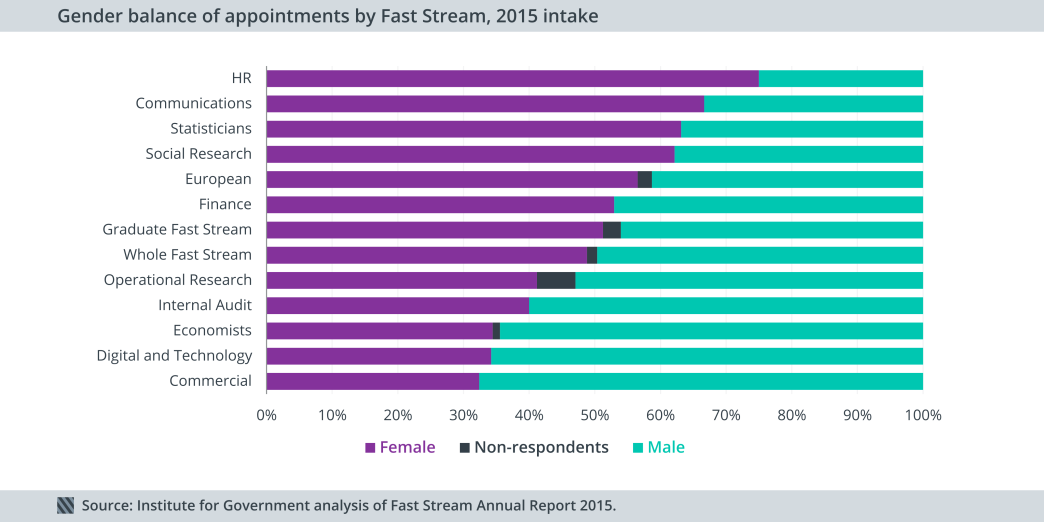
Candidates with economics, biological science, mathematics, and veterinary science degrees made up a greater percentage of appointments than applications: for example, those with an economics degree made up only 8.2% of applicants but 20.5% of appointees. This suggests economic and scientific skills are particularly valued in the application process.
More women enter HR; more men enter the Commercial Fast Stream.
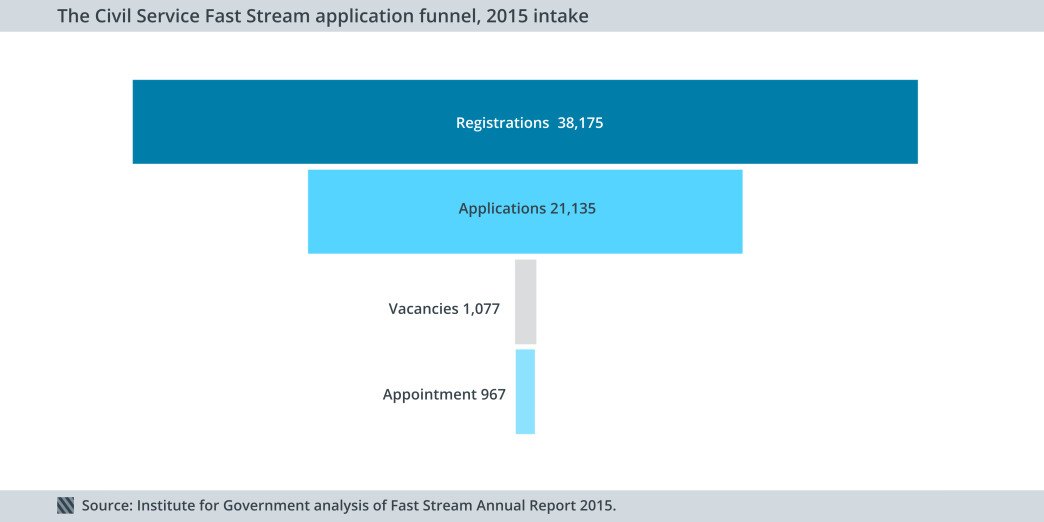
Since 2014, the Fast Stream has continued to grow in size and diversity, helping improve the representation of different social groups across the civil service as a whole. On some metrics, such as representation of disabled people and women, the Fast Stream performs particularly well. However, in terms of university and socio-economic background, more work needs to be done. If the civil service hopes to effectively govern in future, its leaders must accurately represent modern Britain.
- Topic
- Civil service